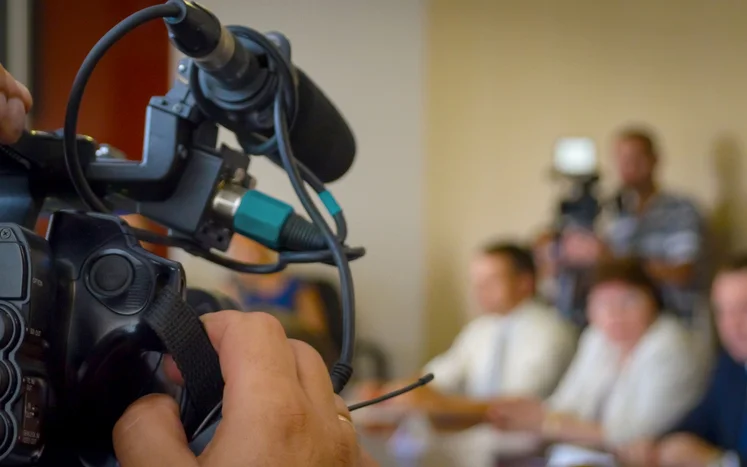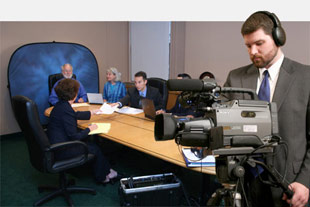Why Lawful Videography Is Vital for Accurate Legal Record-Keeping
In the world of lawful proceedings, the precision of record-keeping is paramount, and legal videography emerges as a vital device in this context. As we discover the multifaceted benefits of lawful videography, one have to consider its ramifications for the future of judicial integrity and openness.
Relevance of Visual Evidence
Developing the relevance of visual proof in lawful procedures is paramount for making sure accurate record-keeping and boosting the total honesty of the judicial procedure. Visual proof functions as a critical device in documenting events, problems, and other relevant information that may be crucial to a situation. Unlike created accounts, which are susceptible to analysis and prejudice, visual recordings provide an objective, unalterable representation of facts as they happened.


This form of proof can catch a variety of elements, including witness behavior, ecological context, and physical evidence, all of which may influence judicial end results. By providing a clear and thorough visual narrative, lawful videography eliminates ambiguity and helps to preserve the credibility of the evidence.
Furthermore, aesthetic evidence can be important in reducing disagreements over accurate disparities, as it permits a direct comparison against testament and other recorded records. In an era where digital modern technology is progressively prevalent, the capability to existing visual proof effectively can substantially enhance the overall high quality of lawful proceedings. Ultimately, the consolidation of visual proof not just boosts the documentation procedure however likewise reinforces public rely on the judicial system by promoting openness and liability.
Enhancing Statement Trustworthiness
The assimilation of lawful videography into courtroom procedures significantly enhances the integrity of witness testament. By capturing the nuances of verbal and non-verbal communication, video clip recordings give a more comprehensive depiction of a witness's attitude, feelings, and dependability. This visual paperwork allows jurors to observe the witness's body language, facial expressions, and total behavior, which are essential elements that can influence their understanding of statement integrity.
Additionally, lawful videography reduces the possibility for misconception or distortion of statement that may take place in created records. Viewers can see and hear the statement as it existed, making sure that the context and tone are maintained. This authenticity fosters a better feeling of trust amongst jurors, who might be much more likely to believe testimony that they can witness firsthand.
Furthermore, the presence of video footage can discourage witnesses from giving misleading or overstated statements, as they understand that their testament is being tape-recorded. This accountability enhances the integrity of the judicial process. Inevitably, legal videography offers as an important tool in making sure that witness statement is not just properly portrayed yet additionally watched with increased reliability by all parties entailed.
Comprehensive Record Preservation
Comprehensive record conservation is necessary for preserving the stability of legal procedures. Legal videography works as an important tool in this procedure, providing an exact visual you can look here and auditory account of statements, depositions, and other crucial moments in an instance. Unlike conventional written transcripts, video clip recordings record the subtleties of body movement, tone, and feeling, which are important for understanding the context and intent behind declarations made throughout legal process.

In addition, the capability to evaluate video clip proof allows attorneys to recognize crucial details that might have been ignored in created records. By preserving a detailed archive of legal procedures via videography, law firms can promote the highest standards of precision and responsibility, ultimately adding to a fairer judicial process.
Simplifying Lawful Proceedings
Simplifying lawful procedures is crucial for enhancing performance and decreasing delays within the judicial system. Lawful videography works as a pivotal tool in achieving this objective by providing clear and exact aesthetic documentation of court hearings, depositions, and testaments. This technology enables for real-time recording, ensuring that all verbal and non-verbal signs are caught, which can promote quicker resolution of conflicts.
The assimilation of videography into legal procedures decreases dependence on conventional methods, such as extensive transcripts, which can be taxing to generate and evaluate. By having actually accessibility to taped video, lawyers can quickly reference crucial minutes, boosting their capability to prepare and existing instances successfully. This look at here immediacy additionally aids in the clarifying of testaments, minimizing the possibility for misinterpretation.
In addition, visual documents fosters a more engaging court room experience for jurors, aiding them to realize complicated information more easily. Inevitably, legal videography improves interaction amongst all events included, from attorneys to judges to jurors, consequently promoting an extra effective judicial procedure (legal videography). In a period where time is important, embracing this technology is essential for click here for info the contemporary lawful landscape
Admissibility in Court
Accurate documentation is crucial not just for efficiency yet additionally for making sure that proof is permissible in court. Legal videography serves as a crucial device in this process, providing a trustworthy aesthetic document of testaments, declarations, and events.
To be considered permissible, legal videography must follow well-known methods, such as proper equipment use, ideal illumination, and clear sound capture. Additionally, it is necessary to have qualified videographers who comprehend the lawful needs surrounding evidence collection. The chain of custodianship should additionally be kept to avoid any type of cases of tampering or modification.
Additionally, lawful videography can boost the persuasiveness of proof by supplying jurors with a direct sight of the testimony, permitting a much more engaged understanding of the case. In summary, the assimilation of legal videography right into record-keeping not just supports effectiveness yet also boosts the honesty and admissibility of proof in court process.
Final Thought
Finally, lawful videography plays a crucial duty in making certain accurate legal record-keeping by supplying unbiased visual documents. This approach enhances the reputation of testimonies, maintains detailed records, and enhances lawful process. Additionally, the admissibility of top notch video clip proof in court further underscores its importance - legal videography. Ultimately, the consolidation of lawful videography right into the judicial procedure advertises transparency and boosts public trust in the honesty of the legal system.